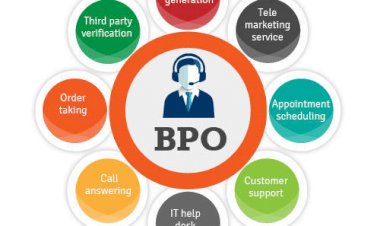The Power of 5S: Transforming Your Workplace for Efficiency and Quality
Discover how the 5S Lean tool can transform your workplace by enhancing organization, efficiency, and safety. Learn about its five steps: Sort, Set in Order, Shine, Standardize, and Sustain.

Introduction
Nowadays, in an expeditious environment where Business Owners, Team Members and Staff Members must operate at their pinnacle efficiency at the workplace & business, to survive in that environment the 5S methodology which is a Japanese Term can be adapted where 5S stands for - Seiri, Seiton, Seiso, Seiketsu and Shitsuke. Developed as a Manufacturing Philosophy which became a part of Lean. This methodology, i.e. 5S, focuses on reducing waste, improving productivity by removing unnecessary clutter from the process and fostering continuous improvement.
What is 5S?
5S- The Japanese Method follows the Japanese Principle which acts as a pathfinder for an organization by shifting them towards a more efficient and safer workplace.
1. Sort (Seiri)
Goal: Eliminate unnecessary items from the workspace.
Seiri, Japanese term, also known as 'SORT' in which the organization, departments & functions need to identify the unnecessary items which are currently consuming organizational manpower. In Sorting, non-essential items need to be identified, removed, or relocated. So, that the workspace becomes cleaner & easier to navigate.
Benefits: Seiri reduces the heap, eliminating distractions and allowing associates to focus on the tasks which adds value & productivity will be increased, and reduces the risk of misplacing worthy items which ultimately affects the speed of completion of the task which is a work in progress.
2. Set in Order (Seiton)
Goal: Arrange necessary items in a logical, accessible way.
After Seiri, Seiton comes in, also known as Set in Order. In this step, there is a marked spot for every item that has to be placed there only after use making the workspace organized and making a place where employees are willing to work. The agenda behind this step is to keep tools, equipment et cetera where they can be easily accessed when in need.
Benefits: Seiton helps to dwindle unimportant tasks by picking the mandate item from the appointed area, minimizes workflow interruptions, improves efficiency, and decreases search time.
3. Shine (Seiso)
Goal: Clean and inspect the workspace to maintain a pleasant, safe environment.
Seiso is also known as 'Shine' and indicates that where you work that place, and area must be free from dust, dirt, and other debris. The idea behind it is simple i.e. emphasizes keeping the workplace clean.
Benefits: Maintaining Seiso makes equipment life long, prevents accidents, and boost employee morale.
Shining isn't about 'tidiness' but creating a standard for cleanliness that everyone should maintain and follow for a productive place.
4. Standardize (Seiketsu)
Goal: Establish procedures and routines for maintaining organization and cleanliness.
This is one of the most crucial steps i.e. Seiketsu also known as Standardize. Standardization here is all about maintaining consistency in the first 3 steps for which setting schedules or maintaining checklists are quite essential to keep track of regular cleaning and assigning roles for specific tasks.
Benefits: When Seiketsu is in place, associates are likely to follow them consistently which results in long-term sustainable improvements.
5. Sustain (Shitsuke)
Goal: Make 5S a part of the workplace culture through ongoing discipline and continuous improvement.
Shitsuke is the last step of 5S and must be part of the organizational culture so that it can become part of an organization or second nature for everyone. Shitsuke requires commitment at all levels of the organization either horizontal or vertical, moreover, management must lead by example.
Ensuring Compliance: Regular Audit, Training Sessions, and Employee Recognition which help to reinforce 5S practices & make it part of daily routine.
Benefits: Improve and adopt new challenges, fostering a culture of quality & discipline.
Benefits of Implementing 5S
Adopting the 5S methodology can provide numerous advantages across various facets of an organization:
Improved Efficiency: With an organized workspace, employees spend less time searching for tools or materials, allowing them to complete tasks more quickly.
Enhanced Safety: A clutter-free environment helps reduce the risk of accidents, making the workplace safer for everyone.
Increased Productivity: An orderly workspace minimizes distractions, allowing employees to concentrate better and perform more effectively.
Better Quality: With a neat and structured environment, employees can execute their tasks with greater accuracy, leading to fewer mistakes and higher-quality results.
Higher Employee Morale: A clean, organized workplace demonstrates that the organization values its employees, boosting job satisfaction and motivation.
Steps to Implement 5S in Your Organization
Implementing 5S can be straightforward if approached step-by-step. Here are some practical steps to get started:
1. Start with a Pilot Area: Select a specific department or area to showcase the benefits of 5S before rolling it out to the entire organization.
2. Utilize Visual Aids: Implement labels, charts, checklists, and color-coding to guide employees in maintaining an organized workspace.
3. Conduct Regular Audits and Recognize Efforts: Carry out periodic audits to ensure adherence to 5S practices and recognize teams or individuals who excel at maintaining high standards, reinforcing the importance of 5S.
Challenges in Maintaining 5S
Although 5S can lead to significant improvements, it requires continued effort to sustain. Common challenges include:
Management Support: Successful 5S implementation requires active support from management. Leaders should demonstrate commitment to the process, creating a culture of continuous improvement.
Conclusion
The 5S methodology serves as a comprehensive framework to streamline operational workflows, elevate workplace safety, and enhance overall quality. By rigorously implementing the principles of sorting, organizing, cleaning, standardizing, and sustaining, organizations can cultivate an environment that promotes efficiency, precision, and employee engagement. When embedded as a core component of the organizational culture, 5S transforms operational practices, paving the way for a disciplined, efficient, and perpetually improving workplace.
To ensure lasting impact, guide your team to start with focused, achievable steps and consistently uphold the 5S standards. With sustained commitment and reinforcement, the advantages of 5S will propagate throughout the organization, establishing a culture of excellence characterized by order, productivity, and continuous improvement.

 Pranay Kumar
Pranay Kumar 































Comments (0)
Facebook Comments